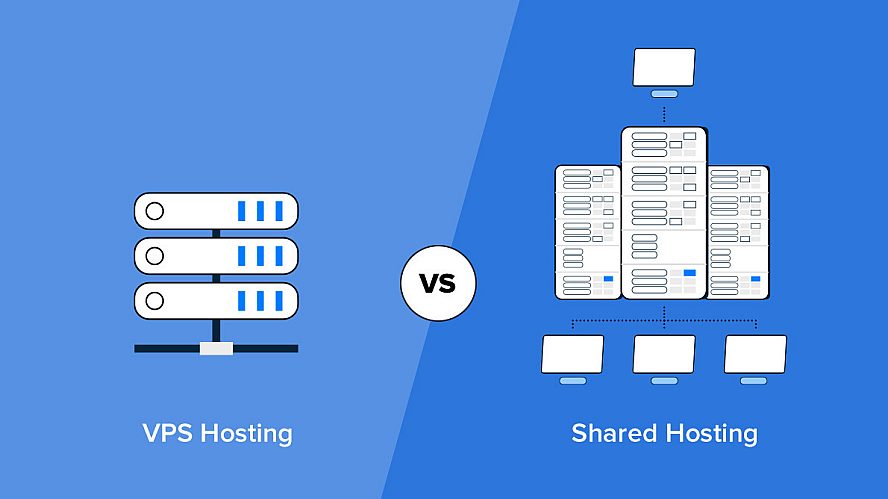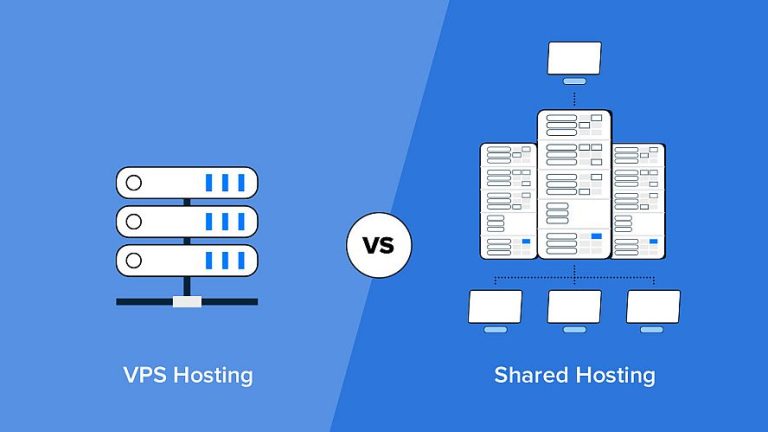
Picture this: You’ve just launched your website, and everything seems perfect. Then, seemingly overnight, your site starts loading like it’s running on dial-up internet. Your visitors are bouncing faster than a rubber ball, and you’re staring at your hosting dashboard wondering what went wrong.
I’ve been there. We’ve all been there. The hosting decision that seemed so simple at the beginning suddenly feels like it might make or break your online presence. After managing dozens of websites across different hosting types—and making some expensive mistakes along the way—I want to share what I wish someone had told me when I was starting out.
This isn’t going to be another dry comparison of technical specs. Instead, let’s talk about what these hosting options actually mean for real websites, real businesses, and real people trying to make their mark online.
The Apartment Building Analogy That Actually Makes Sense
Before we dive into the nitty-gritty, let me paint you a picture that’ll make everything crystal clear.
Shared hosting is like living in a budget apartment building. You get your own room (website), but you’re sharing the building’s resources—water pressure, electrical capacity, internet connection—with dozens of other tenants. When your neighbor decides to throw a party (traffic spike), your shower might turn into a trickle. It’s affordable, and for many people, it works just fine. But when things go wrong, everyone feels it.
VPS hosting is like having a condo in that same building. You still share the physical structure, but you have your own dedicated utilities, your own thermostat, and your own security system. Your neighbor’s party doesn’t affect your water pressure because you have your own connection. It costs more, but you get independence and reliability.
Now, let’s see how this plays out in the real world.
Performance: The Numbers Don’t Lie (But They Don’t Tell the Whole Story)
Here’s something that might surprise you: VPS-hosted sites load between 15% and 35% faster than those hosted on shared plans. But what does that actually mean for your website?
The Shared Hosting Reality
I once managed a small e-commerce site on shared hosting. During the day, it ran fine—pages loaded in 2-3 seconds, which isn’t great but isn’t terrible. Then Black Friday happened. The site became virtually unusable. Pages took 15-20 seconds to load, if they loaded at all. We lost thousands of dollars in sales because we were sharing server resources with other sites that were also experiencing traffic spikes.
Shared hosting works beautifully until it doesn’t. And when it doesn’t work, it really doesn’t work.
The VPS Difference
After moving that same site to VPS hosting, Black Friday the following year was a completely different story. The site handled the traffic surge without breaking a sweat. Page load times stayed consistent, and we actually had our best sales day ever.
But here’s the thing nobody talks about: VPS hosting isn’t just about handling traffic spikes. It’s about consistency. Your site performs the same way at 3 AM as it does during peak hours. That consistency builds trust with both your visitors and search engines.
Security: It’s Not Just About Hackers
When people talk about hosting security, they usually focus on preventing hackers. But in my experience, the bigger risk with shared hosting is something much more mundane: other people’s mistakes.
Shared Hosting: The Weak Link Problem
I learned this lesson the hard way when a site I managed got blacklisted by Google—not because of anything I did, but because another site on the same shared server was sending spam emails. It took weeks to get delisted, and during that time, our search traffic plummeted.
In shared hosting, you’re only as secure as the least careful person on your server. Someone else’s compromised WordPress installation can affect your site’s reputation and performance.
VPS: Your Own Digital Fortress
With VPS hosting, you get isolated environments. When another VPS on the same physical server gets compromised, your site remains completely unaffected. You also get the ability to implement your own security measures—custom firewalls, security software, and monitoring tools that shared hosting simply doesn’t allow.
Control and Customization: The Developer’s Dilemma
Shared Hosting: The Training Wheels
Shared hosting is like having training wheels on your bike. It’s safe, it’s simple, and you can’t really hurt yourself. The hosting provider manages everything—server updates, security patches, software installations. For many people, this is exactly what they want.
But what happens when you need to install a specific PHP extension for your application? Or when you want to optimize your server configuration for better performance? With shared hosting, you’re stuck with whatever the hosting provider offers.
VPS: The Playground for Power Users
VPS hosting gives you root access to your virtual server. You can install any operating system, any software, and configure everything exactly how you want it. I once needed to run a specific version of Node.js for a client project that wasn’t available on shared hosting. With VPS, I just installed it myself.
But here’s the catch: with great power comes great responsibility. You’re responsible for managing updates, security patches, and troubleshooting issues. If you’re not comfortable with server administration, this can be overwhelming.
Scalability: Planning for Success (And Failure)
Shared Hosting: The Growth Ceiling
One of my biggest frustrations with shared hosting is hitting the wall. You know the feeling—your site is growing, traffic is increasing, and then suddenly you’re getting resource limit errors. The only solution is usually to upgrade to a more expensive shared plan, but you’re still fundamentally limited by the shared environment.
VPS: Room to Grow
VPS hosting offers a middle ground for companies that have outgrown shared hosting but don’t yet require the full resources of a dedicated server. The beauty of VPS is that you can scale resources up or down based on your actual needs.
I manage a seasonal business website that gets huge traffic spikes during certain months. With VPS hosting, I can temporarily increase RAM and CPU during peak seasons, then scale back down during slower periods. This flexibility has saved thousands of dollars compared to maintaining high-capacity hosting year-round.
The Real Cost Analysis (Beyond the Monthly Fee)
Shared Hosting: The Hidden Costs
Yes, shared hosting can cost as little as $3-5 per month. But let’s talk about the hidden costs:
- Lost sales during downtime
- Time spent dealing with performance issues
- Limited backup options (often paid extras)
- Restricted email limits
- Upgrade fees when you outgrow your plan
I calculated that a client’s “cheap” shared hosting actually cost them over $2,000 in lost revenue during a single month due to poor performance during their busy season.
VPS: The Investment That Pays Off
VPS hosting typically costs $20-100+ per month, depending on your resources. But consider what you get:
- Consistent performance and uptime
- Advanced backup options
- Better email deliverability
- Ability to optimize for your specific needs
- Room to grow without migration headaches
VPS hosting is gaining popularity among small and medium-sized enterprises (SMEs) due to its advantages in performance and security over shared hosting, despite the higher costs.
The Migration Question: When and How
Signs It’s Time to Leave Shared Hosting:
- Your site regularly hits resource limits
- Page load times are consistently slow
- You’re getting frequent downtime
- You need software that isn’t available on shared hosting
- Your business depends on your website’s performance
The Migration Process:
Moving from shared to VPS hosting doesn’t have to be scary. Most good VPS providers offer migration assistance, and many will do it for free. The key is planning ahead—don’t wait until your shared hosting is completely failing to make the switch.
Managed vs. Unmanaged VPS: The Middle Ground
Here’s something the original comparison missed: not all VPS hosting is created equal. You can choose between:
Unmanaged VPS: You handle everything yourself. Cheaper, but requires technical knowledge.
Managed VPS: The hosting provider handles server management, updates, and security. More expensive, but worth it if you want VPS performance without the headaches.
For most business owners, managed VPS is the sweet spot—you get the performance and reliability of VPS without needing to become a server administrator.
Real-World Recommendations
Choose Shared Hosting If:
- You’re launching your first website and aren’t sure about traffic expectations
- Your budget is extremely tight (under $10/month)
- You’re building a simple personal blog or portfolio
- You want zero server management responsibilities
- Your website is truly just a hobby project
Choose VPS Hosting If:
- Your business depends on your website
- You expect more than 1,000 visitors per month
- You need consistent performance
- You’re running an e-commerce site
- You want room to grow without migration headaches
- You can afford $20-50/month for hosting
The 2025 Hosting Landscape
The hosting world has evolved dramatically. Cloud-based VPS options have made enterprise-level performance accessible to small businesses. Managed VPS services have eliminated many technical barriers. And with the increasing importance of site speed for SEO, the performance advantages of VPS hosting are more valuable than ever.
My Personal Recommendation
After managing websites on both platforms for years, here’s my honest advice: if your website matters to your business or career, invest in VPS hosting from the start. The headaches you’ll avoid and the opportunities you won’t miss make it worth the extra cost.
I’ve seen too many businesses learn this lesson the expensive way—losing customers during traffic spikes, struggling with poor performance, or spending more on workarounds than they would have spent on proper hosting.
The Bottom Line
Choosing between shared and VPS hosting isn’t just about technical specifications—it’s about understanding your priorities, your risk tolerance, and your growth plans.
Shared hosting is like buying a reliable used car. It’ll get you where you need to go, but don’t expect to win any races. VPS hosting is like buying a newer car with better performance and reliability. It costs more upfront, but it’s built for the long haul.
The question isn’t really “Which is better?” The question is “Which is better for you, right now, with your specific needs and goals?”
Just remember: your hosting choice affects every single person who visits your website. Make sure it’s a choice you can live with, especially when your site starts getting the traffic you’re working so hard to attract.
What’s your hosting story? Have you made the jump from shared to VPS, or are you still trying to decide? I’d love to hear about your experiences and what factors are most important in your decision-making process.


